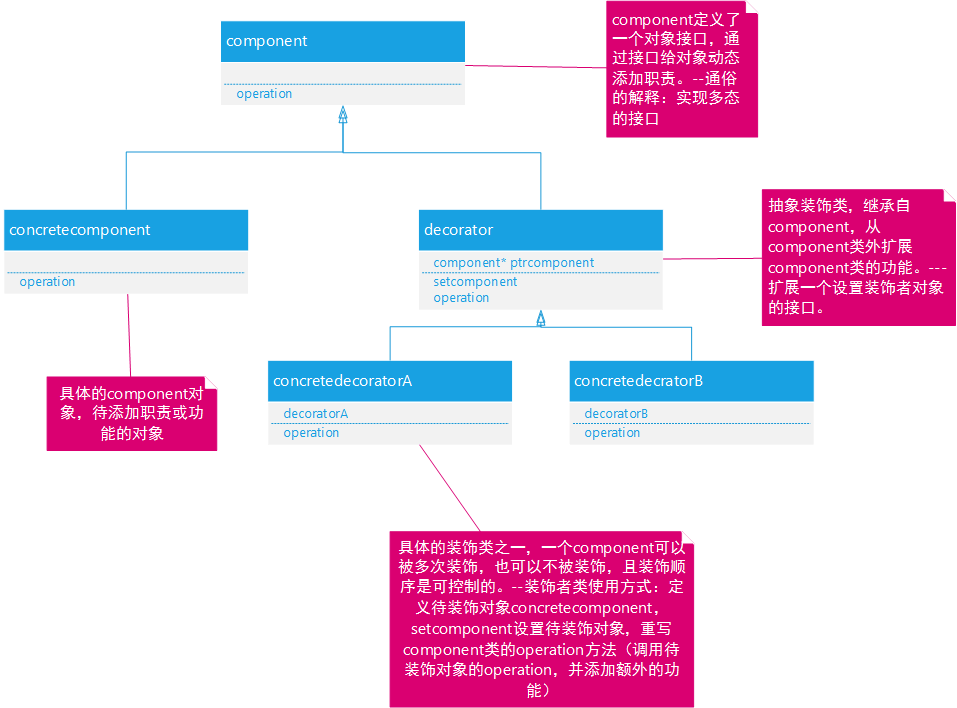简介
将核心功能和装饰功能分离, 为已有功能动态新增功能。
详述
装饰者模式英文翻译:Decorator。
装饰者模式类图

component:抽象接口类。
concretecomponent:具体的component类,实现核心功能,也是待添加功能的对象。
decorator:装饰者抽象类,继承自component抽象接口类,实际调用component类的operation方法,提供设置待添加职责对象接口setcomponent。
concretecomponentA:具体的装饰者类A,重写component的operatiron方法 ,concretecomponentA的operation调用ptrcomponent->operation后添加新的职责。
包装过程
concretecomponent* cct = new concretecomponent;
concretedecoratorA* cda = new concretedecoratorA;
concretedecoratorB* cdb = new concretedecoratorB;
cda.setcomponent(cct);
cdb.setcomponent(cda);
cdb.operation();
包装后的cdb.operation就依次执行了cct的operation、cda的operation、cdb的operation,为cct额外增加了cda、cdb两个职责。
特性及关键点
装饰者对象A和B都通过setcomponent来对对象进行包装,每个装饰对象的实现和使用这个对象分开,A和B类均只需关注自己要增加的额外职责,不需要关心如何将职责增加到对象上。
把装饰功能从类的中去除,简化原有的类,把核心职责和装饰功能分开,去除相关类中重复的装饰逻辑。
小纪
打着瞌睡学完了装饰者模式,好崇拜前辈们,可以说完破了我以前的拙劣设计。